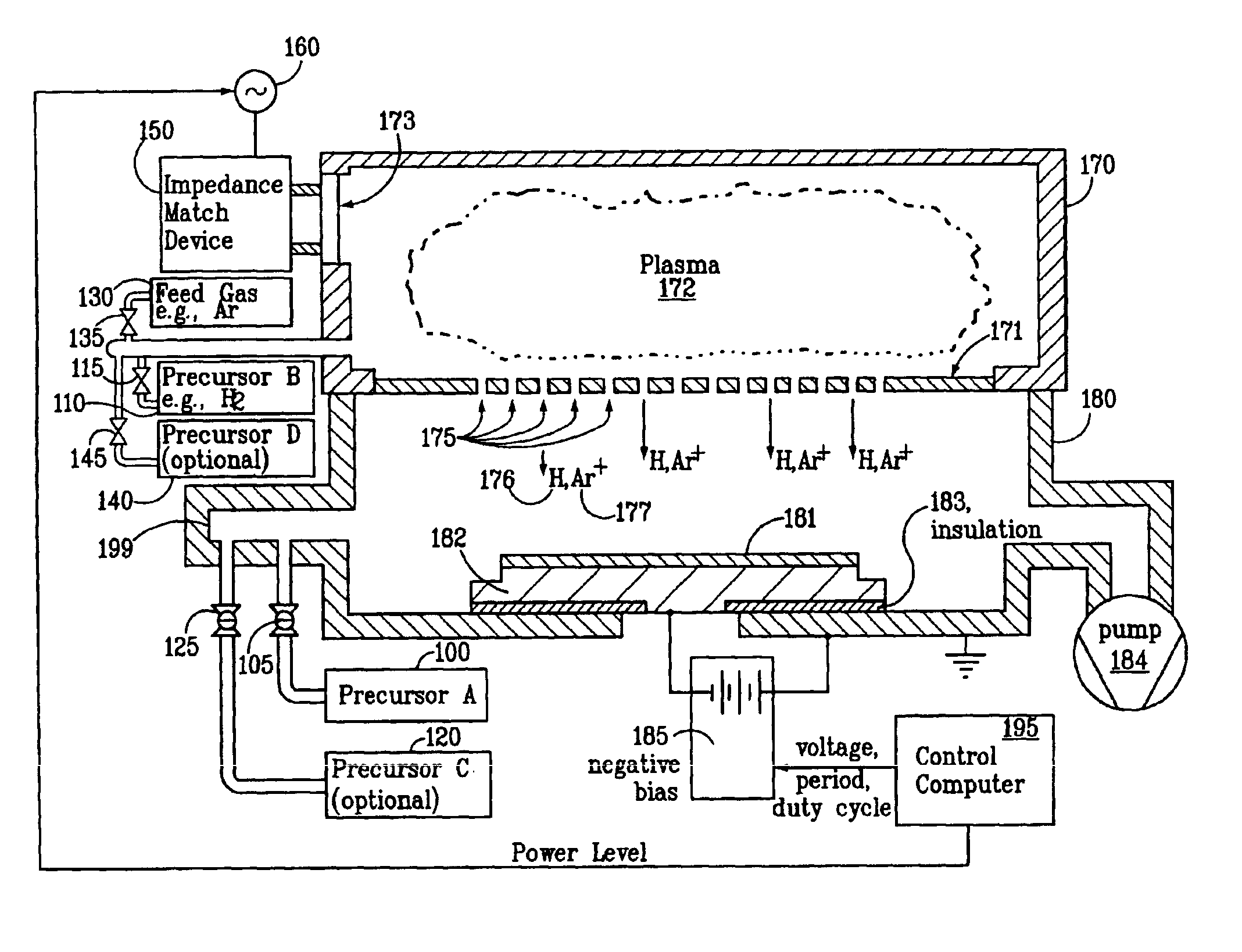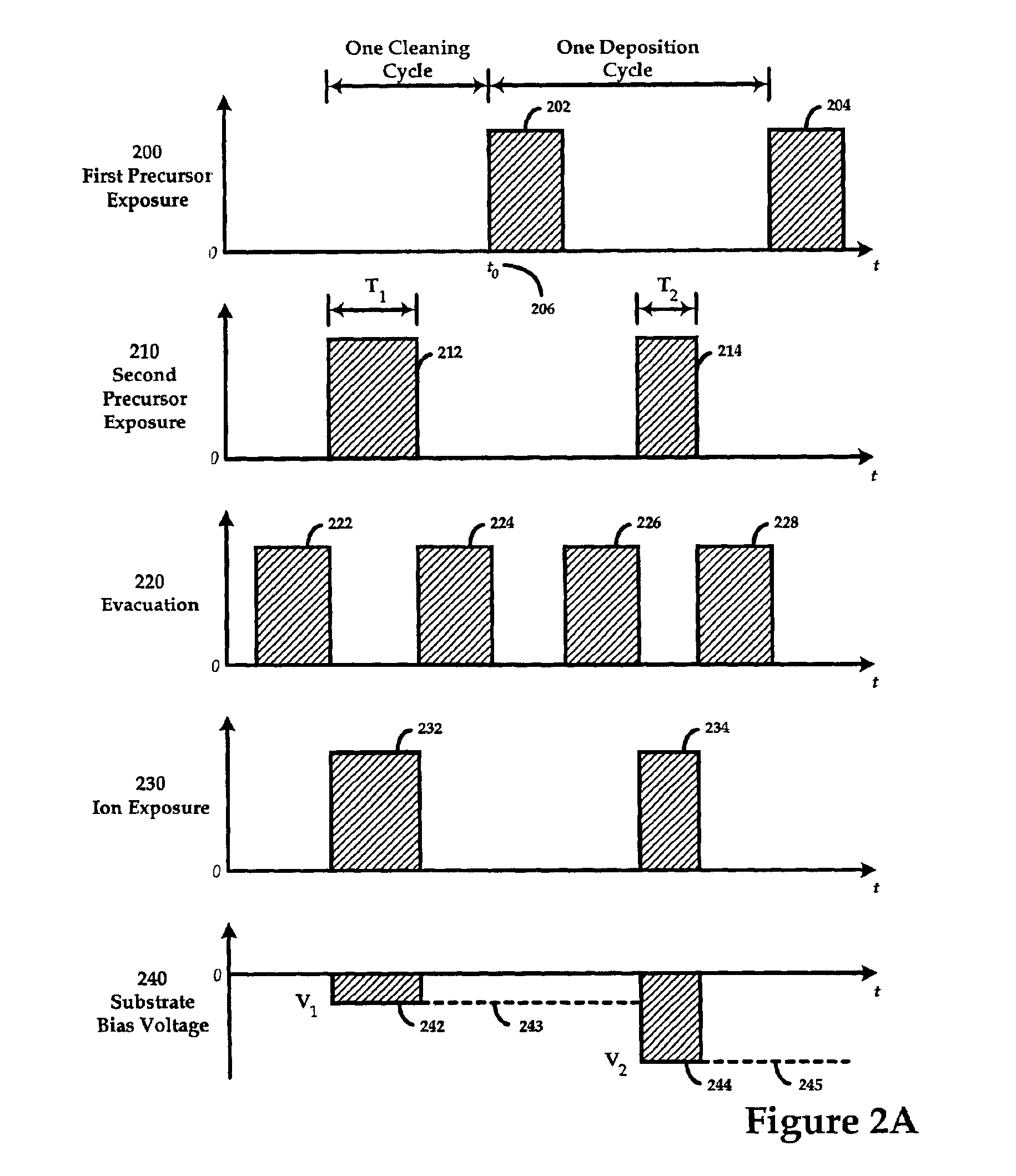Method for integrated in-situ cleaning and subsequent atomic layer deposition within a single processing chamber
a processing chamber and in-situ cleaning technology, applied in chemical vapor deposition coatings, coatings, electric discharge tubes, etc., can solve the problems of poor electrical connection, oxidation of exposed underlying metals, and high via or contact resistance, so as to enhance the overall stack performance
- Summary
- Abstract
- Description
- Claims
- Application Information
AI Technical Summary
Benefits of technology
Problems solved by technology
Method used
Image
Examples
Embodiment Construction
[0023]FIG. 1 illustrates an apparatus suitable for in-situ preclean / surface treatment followed by MII-ALD deposition. A description of the MII-ALD process and apparatus is described in the MII-ALD application and will not be repeated in detail here for brevity. Although the MII-ALD process can be sequential or continuous in nature, both processes involve the reaction of a first and second precursor subject to ion exposure such that the ions deliver the necessary activation energy required for deposition to the near surface atoms and adsorbed reactant(s) via collision cascades.
[0024]As discussed previously, the quality of a deposited film is significantly affected by the cleanliness of the substrate surface prior to deposition. Therefore, in practice, the MII-ALD process should be preceded by a surface cleaning step, most preferably in-situ. The MII-ALD process and associated apparatus, invoked in the absence of a first precursor, is an effective in-situ cleaning process and will be ...
PUM
| Property | Measurement | Unit |
|---|---|---|
| temperatures | aaaaa | aaaaa |
| temperatures | aaaaa | aaaaa |
| frequencies | aaaaa | aaaaa |
Abstract
Description
Claims
Application Information
 Login to View More
Login to View More - R&D
- Intellectual Property
- Life Sciences
- Materials
- Tech Scout
- Unparalleled Data Quality
- Higher Quality Content
- 60% Fewer Hallucinations
Browse by: Latest US Patents, China's latest patents, Technical Efficacy Thesaurus, Application Domain, Technology Topic, Popular Technical Reports.
© 2025 PatSnap. All rights reserved.Legal|Privacy policy|Modern Slavery Act Transparency Statement|Sitemap|About US| Contact US: help@patsnap.com



